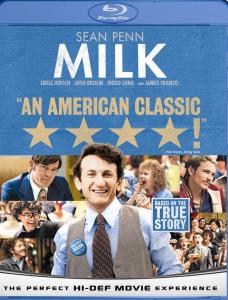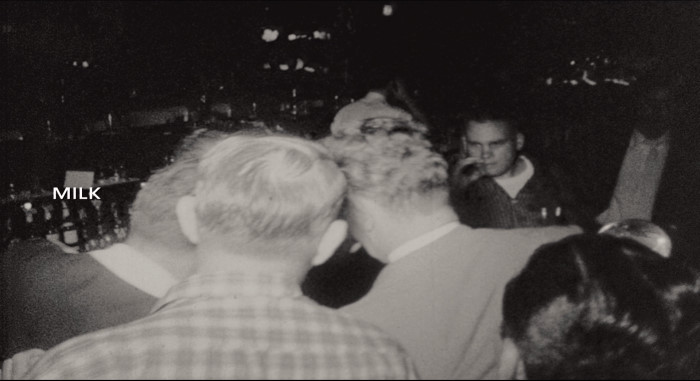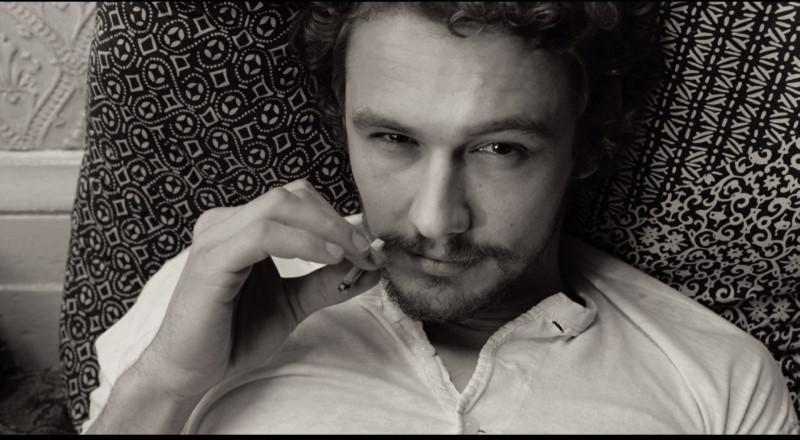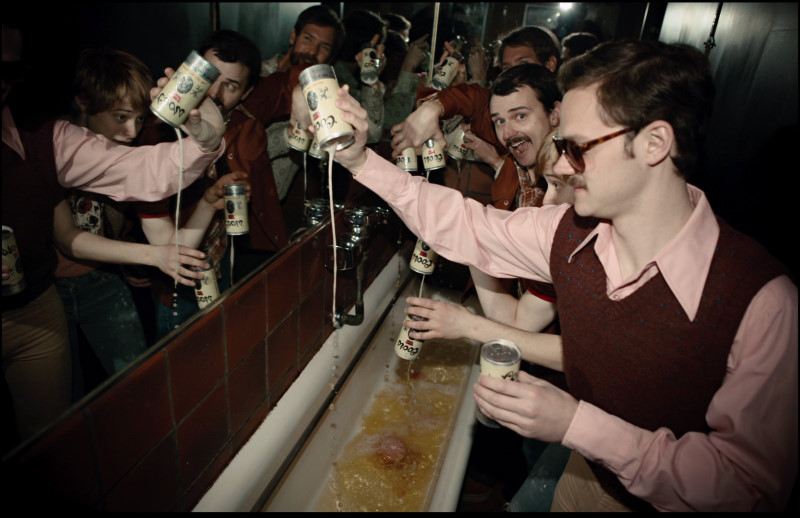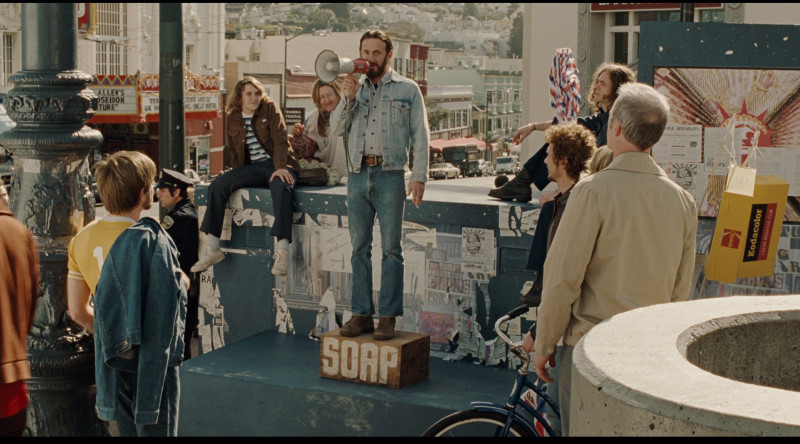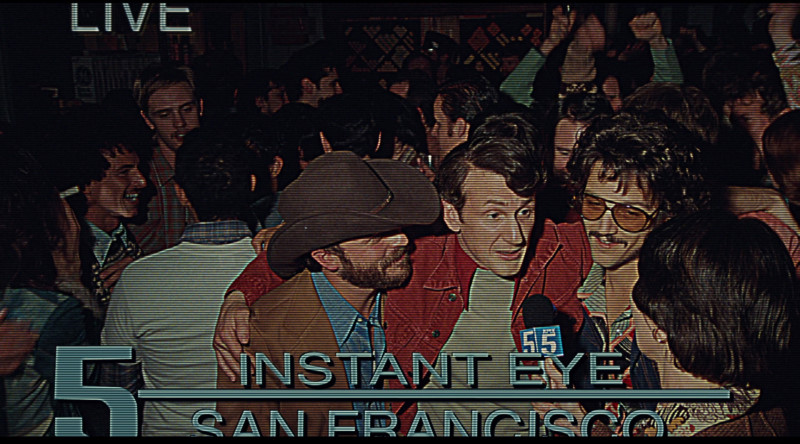|
Milk [Blu-ray]
(Gus Van Sant, 2008)
Review by Leonard Norwitz
Studio:
Theatrical: Focus Features & Axion Films & Groundswell
Blu-ray: Universal Studios Home Entertainment
Disc:
Region: FREE
Runtime: 2:08:18.691
Disc Size: 42,948,677,864 bytes
Feature Size: 34,050,342,912 bytes
Total Bitrate: 35.38 Mbps
Chapters: 20
Case: Standard Blu-ray case
Release date:
March
10th, 2009
Video:
Aspect ratio: 2.35:1
Resolution: 1080p / VC-1
Bitrate:
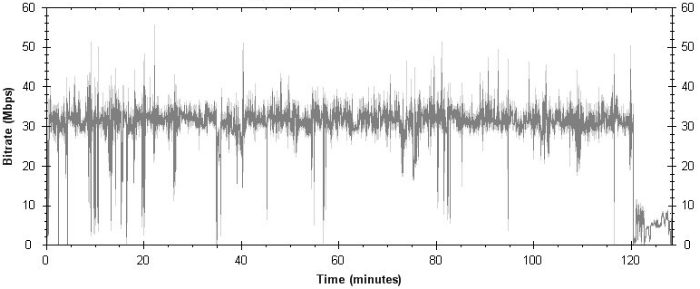
Audio:
DTS-HD Master Audio English 4040 kbps 5.1 / 48 kHz / 4040
kbps / 24-bit
(DTS Core: 5.1 / 48 kHz / 1509 kbps / 24-bit)
Subtitles:
English, Spanish, French, and none
Extras (all in HD):
• Remembering Harvey (13:21)
• Hollywood Comes to San Francisco (14:32)
• Marching for Equality (7:58)
Exclusive to Blu-ray:
• BD-Live 2.0
Synopsis: From the acclaimed director Gus Van Sant (Good
Will Hunting and Elephant) comes the powerful and inspiring
story of California's first openly gay elected official,
Harvey Milk. With a powerhouse performance in the leading
role, Sean Penn (Mystic River) and supporting cast Emile
Hirsch (Into the Wild), Josh Brolin (No Country for Old Men)
and James Franco (Spider-Man 1, 2 and 3) bring this
unforgettable story to the big screen.
Gay Rights Activist. Friend. Lover. Unifier. Politician.
Fighter. Icon. Inspiration. Hero. His life changed history,
and his courage changed lives.
In 1977, Harvey Milk was elected to the San Francisco Board
of Supervisors, becoming the first openly gay man to be
voted into major public office in America. His victory was
not just a victory for gay rights; he forged coalitions
across the political spectrum. From senior citizens to union
workers, Harvey Milk changed the very nature of what it
means to be a fighter for human rights and became, before
his untimely death in 1978, a hero for all Americans.
The Film: 8
While the date doesn't stick in my mind, I remember where I
was, what I was doing and what the reactions of others
around me when we heard the news that San Francisco
Supervisor Harvey Milk and Mayor George Moscone were shot –
and by another politician, no less. I knew a number of
people who were active in the Gay Pride and
Anti-Discrimination movements and who met or knew Harvey
during his brief career as a political activist.
Gus Van Sant's quasi-documentary film about those years
reminds us that there was a time just a few decades ago when
gays were routinely rousted by police in various large
cities, when gays and lesbians were self-closeted for fear
of something worse than death, and when you could walk into
a public building without first being cleared by a metal
detector.
Two of the most powerful forces at work in human psychology
are martyrdom and humiliation. We wince at the irony that
Harvey, of all people, could not fathom the implications of
Dan White's humiliation at what he felt, however misguided,
was at Milk's hands. But who could have predicted how far
his feelings of impotence would carry him? For that matter
who could have predicted the extent to which Harvey's murder
energized the movement instead of stopping it in its tracks
(though this was hardly White's motivation)?
I'm not all that convinced that Van Sant's movie is nearly
as good a film as it is an important and relevant one: a
story that needs telling. It's the story of the first openly
gay man to be elected to public office in the U.S., and how
he discovered the political power inherent in coming out for
all gays. (At one point Milk notes that if a gay comes out
to his parents, "they'll vote for us 2 to 1 if they know one
of us." While the evocation of time and place seems flawless
– it was certainly so in my case – I was less convinced by
the narrative. Milk (Sean Penn in his second Oscar-winning
performance) tells his story to a tape recorder shortly
before his death. Instead of bringing me closer to the man
and his fate, I felt the device took me out of the story
each time we returned to it. Perhaps my expectations were
too high, a second viewing at a later time will tell.
Van Sant clearly wanted to bring us back to the chaos,
excitement and fear of the first marches. Still, these
seemed too short in time and distance (more like 1.5 miles
than a couple of blocks) and without a sense of how the city
was reacting as it happened. Instead, and to give the events
in the Castro some context, the anti-gay political movements
spearheaded by O.J. Anita Bryant in Florida and State
Senator John Briggs in California were placed front in
center in the movie. The personal distress of Supervisor Dan
White (Josh Brolin in a deserved Oscar nominated
performance) or his constituency could hardly have been felt
to be of great concern by comparison.
Milk's personal life, especially toward the end, might
optimistically be described as a distraction. I was reminded
of Jesus Christ Superstar for a moment when it was hard for
the hero of the story to tell true friends from those who
wanted to bask in the glory from those who wanted to promote
some political or social agenda, even if it was his or His.
The candlelight march at the movie's end finally enlarges
the scope of the effects of the movement and Harvey Milk's
role in it. The epilogues make for hopeful epitaphs for our
time.
Image:
3-8/9
NOTE:
The below
Blu-ray
captures were taken directly from the
Blu-ray
disc.
The first number indicates a relative level of excellence
compared to other Blu-ray video discs on a ten-point scale.
The second number places this image along the full range of
DVD and Blu-ray discs.
Van Sant liberally folds in archive docufootage. The black &
white film used over the opening credits is tabloid material
taken from the police raids from two decades earlier. As
events unfold in around the Castro, it's sometimes hard to
tell where his movie leaves off and archive footage begins.
A native of the area would be trying to find themselves
amongst the people just crossing the street or waiting for a
bus. Some of the archive footage is pretty ratty with grain
the size of snowballs and contrast with no grayscale to
speak of. My only quibble here is that original 4:3 material
is stretched to fit into the 1.85:1 format instead of being
cropped so that circles become ovals and everyone needs to
be on a diet. None of this, of course, is the fault of the
transfer.
As to that, Van Sant smartly uses a fairly grainy filmic
look, and only occasionally – and not disruptively – are
things highly resolved with a longer tonal scale. Still,
there is no noise to speak of in the darker, shadowy scenes.
And though I thought maybe there was some sharpening,
perhaps to overcome the grain, I was hard pressed to give it
a name. The bit rates are fairly high, settling around the
low 30s. All in all, I think the resulting high definition
video looks as good or better than we might have seen in the
theatre – if for no other reason than if the projectionist
didn't nail the focus during the opening credits, he might
find it difficult to find a suitable point later in the film.
CLICK EACH
BLU-RAY
CAPTURE TO SEE ALL IMAGES IN FULL 1920X1080 RESOLUTION
Audio & Music:
6/9
Before I forget to mention it, high praise indeed for Danny
Elfman's moody and elegiac score (At times it put me in mind
of Ennio Morricone's The Mission.) Instead of going for a
polyglot of 70s pop music, the musical fabric for Milk was
kept fairly discreet with only occasional clips from those
days, with dollops of opera, the music that Harvey preferred
to relax by.
While the image quality of this Blu-ray might not be enough
to warrant purchase over the DVD, the uncompressed audio mix
has to be a plus – not because it is so exciting or anything
resembling demonstration material but because it is so often
whispered. Even so, I would not go so far as to call the
dialogue track crisp. The surrounds get a shot at opening
things up in big crowd scenes, of which there are a couple
of important ones, and in its few big music cues. I was
dismayed, however - though again, not the fault of the
transfer - that speech through the bullhorn was not
sufficiently altered. I guess Van Sant went for clarity
rather than realism here.
Operations:
8
Loading is fast, after which we are taken directly to the
main menu, which is laid out like other Universal Blu-rays.
Arrows tell you which way to direct your remote, and the
bonus feature instructions are detailed and intuitive. There
is no U-Control this time around so navigation couldn't be
easier.
Extras:
3
These were something of a disappointment. Did my eyes
deceive, or was there really no footage of Harvey Milk in
the segment titled "Remembering Harvey"? It was good as far
as it went, as we heard from people like Carol Ruth Silver,
a SF Supervisor who sat alongside Milk and championed his
causes; Anne Kronenberg, Harvey's campaign manager, played
in the movie by Alison Pil (who has been doing a lot of TV,
mostly); Cleve Jones, played by Emile Hirsch; Alan Baird,
who has a cameo in the movie as himself (he was the Coors
Boycott Organizer who approaches Harvey to get Coors beer
out of the Castro); and Danny Nicoletta, campaign
photographer, played by Lucas Grabeel (remember him from
High School Musical – you see, some of those actors do
actually grow up to become adults.)
"Marching for Equality" covers two of the major march
sequences from the movie as seen, both in retrospect and on
the set by Cleve Jones, Daniel Nicoletta and Gilbert Baker.
"Hollywood Comes to San Francisco" – an unimaginative title
under the circumstances - is a series of brief interviews
from cast, often commenting on their real-life counterparts,
some of whom they got to meet. The producers chime in, and
the writer, Dustin Lance Black, tells his personal story as
well.
These are all in wonderful 1080i, but conspicuously absent
are Sean Penn and Gus Van Sant, speaking to us directly. I
shall say no more.
Bottom line:
7
Despite the lightweight bonus features, especially the
absence of Van Sant and Penn (no audio commentary, either),
one can hardly not recommend the video, if hesitantly, as we
cannot tell when the oversight (more likely, a rush to press
deadline) might be corrected.
Leonard Norwitz
February 28th, 2009
|
|
![]()
![]()

![]()
![]()
![]()
![]()

![]()
![]()

